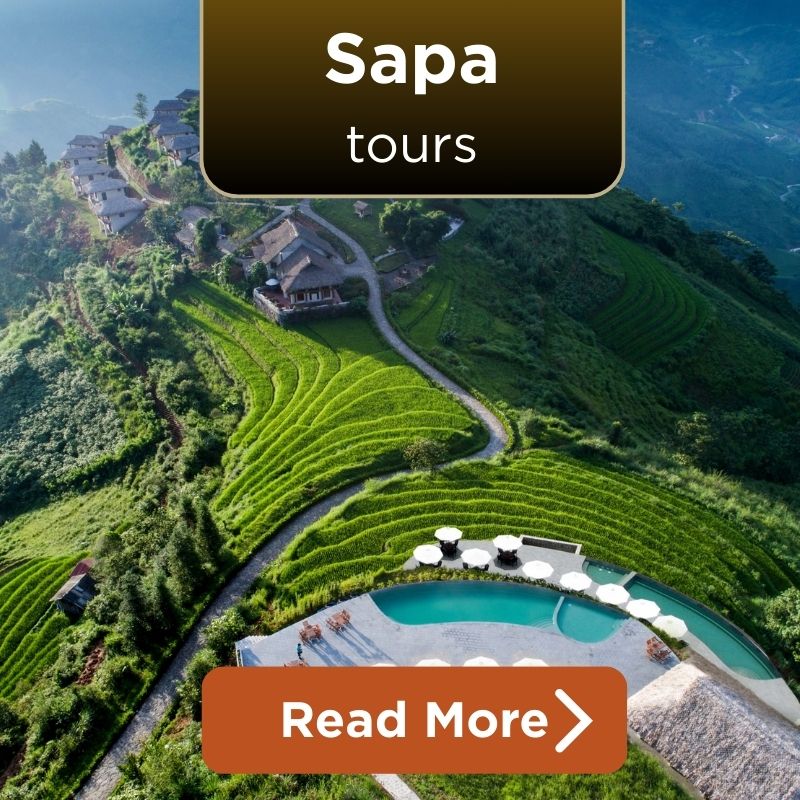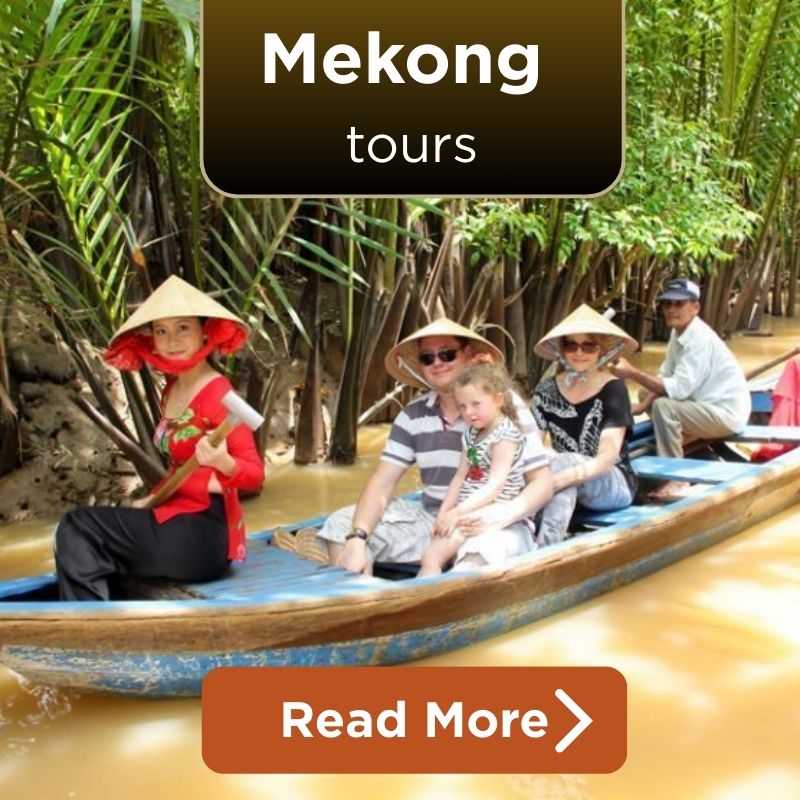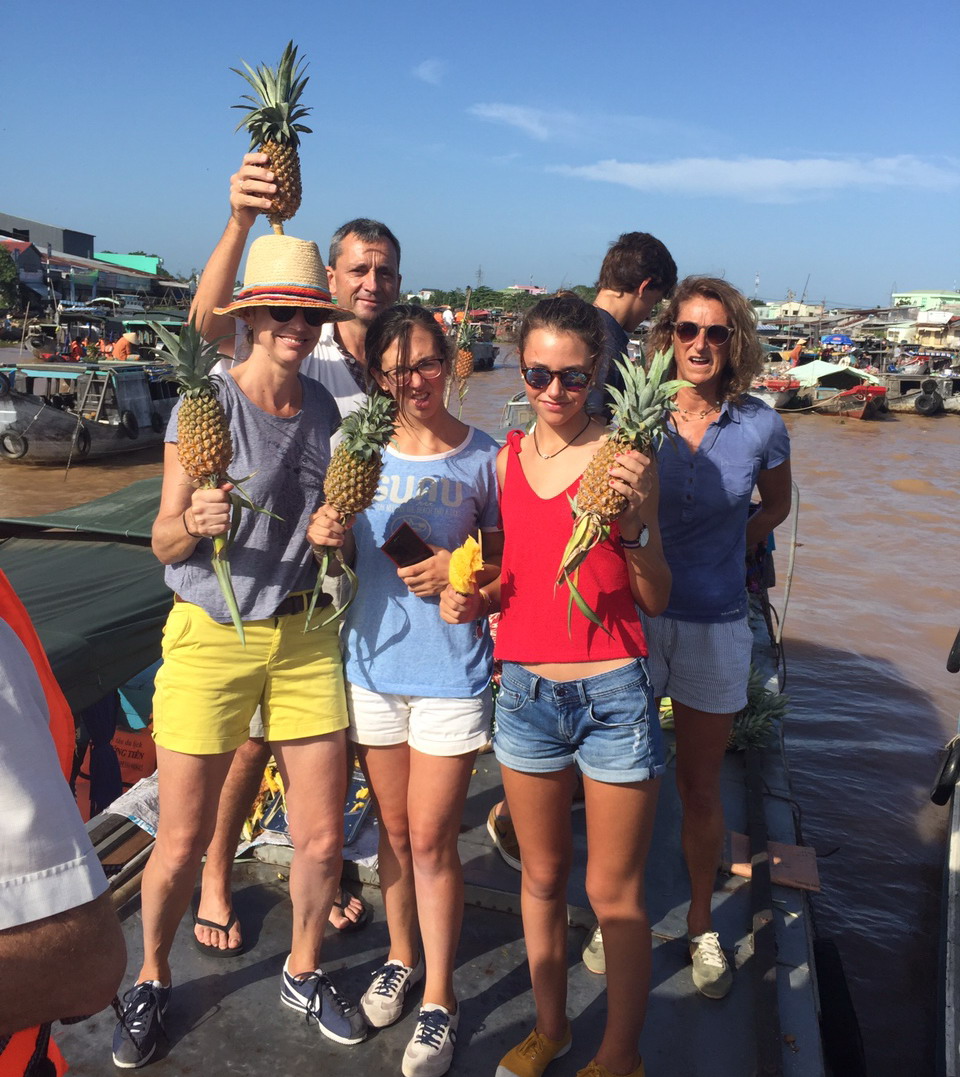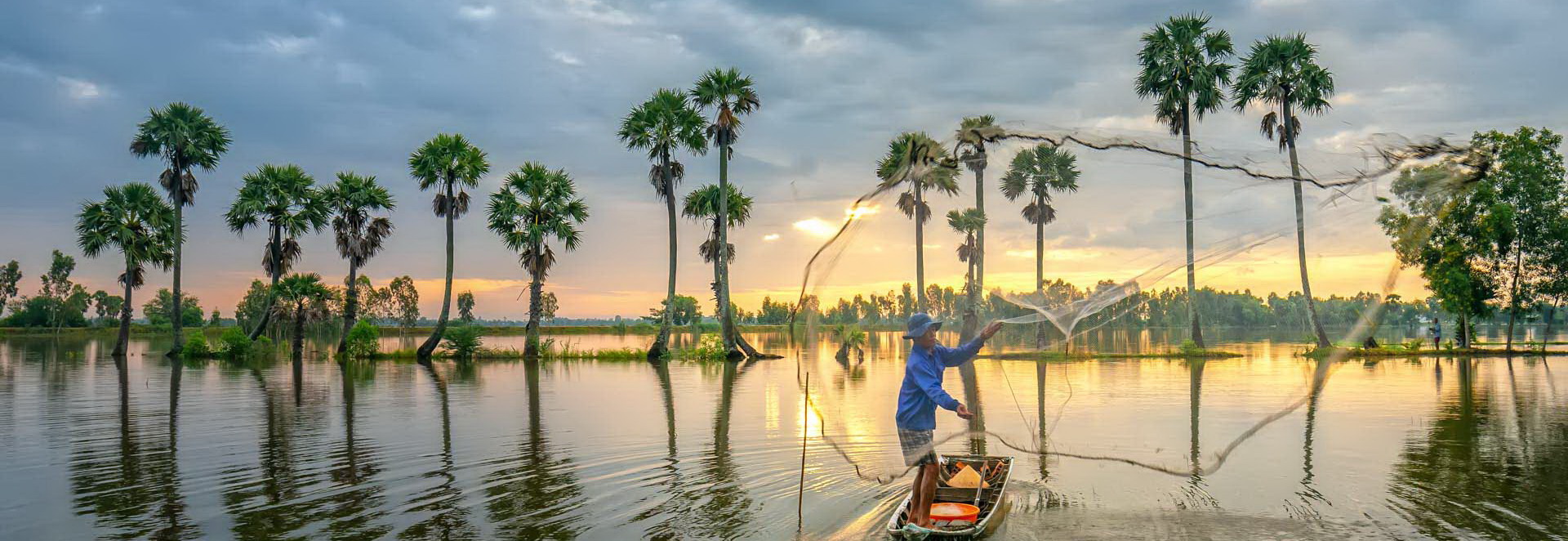Southern Vietnamese folk music is more than a cultural treasure, it is the beating heart of Vietnam’s southern region. Recognized by UNESCO as an intangible cultural heritage, the captivating Đờn ca tài tử music form is a mesmerizing experience of traditional instruments and sentimental tunes. Hop on and follow me on a thrilling ride through the excitingly colorful history of Southern Vietnamese folk music, and see how you can encounter it on a Mekong Tour.
The Origins and Development of Southern Vietnamese Folk Music
Historical Background
Nhã nhạc was the elegant music that resonated throughout the Hue court. However, it was the inhabitants of Central Vietnam who, in the south in the late 19th century, created Southern Vietnamese folk music. In the Mekong Delta melting pot, they contributed to the shaping of Đờn ca tài tử—what we are so proud of today. The southern region of the beautiful country became home to a new fusion of music.
Development Through the Ages
As the musical integrity of the southern countryside developed, its prominent figures, like Cao Văn Lầu, got their chance to shine. His “Dạ Cổ Hoài Lang” became an evergreen, as it pours sentiment and emotion into aural art. Picture the vibrato of gongs mixed with a shimmering symphony of string instruments and voices, echoing through the rice plains or supporting a canoe floating through gastro territory.
Đờn Ca Tài Tử Museum
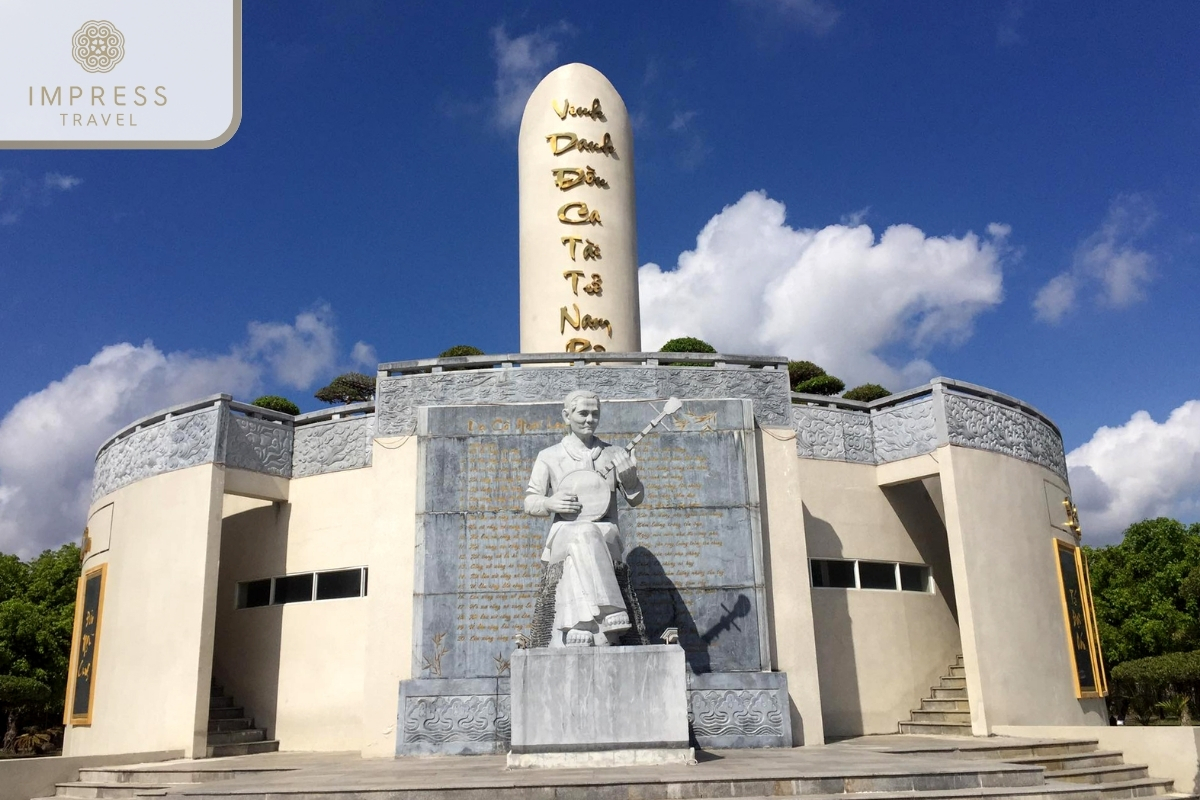
Đờn Ca Tài Tử Museum
The Đờn ca tài tử Museum alone is a memory palace of Vietnamese musical history. Located in Southern Vietnam, it is the best place to taste the cultural context of what we know as Đờn ca tài tử. Rummage in a bag of traditional instruments and scrolls in the darkest depths of the museum.
Characteristics and Unique Features of Southern Vietnamese Folk Music
Musical Instruments
Musical Instruments. Now that we know how the music came to be let’s talk about the stars of the show—the instruments! Each of them makes its contribution to the symphony a Southern Vietnamese folk piece is:
- Đàn Tranh (Zither): With 16 strings playing together, it’s an extremely vibrant instrument providing a melodic and harmonic accompaniment.
- Đàn Kìm (Moon Lute): A two-stringed instrument with a round body, it has deep and echoing sounds that help to set the mood.
- Đàn Nguyệt (Two-Stringed Lute): It’s another two-stringed instrument, but its tones are deep and resonating. It’s likely to resonate as the most emotionally captivating.
- Đàn Cò (Vietnamese Fiddle): This Vietnamese fiddle is similar to a violin, but even though it looks like a familiar instrument, don’t let it fool you: it has a rich tone and expressive features that make it a perfect choice for playing melodies or solos.
- Sáo (Flute): It’s a basic flute making breathy melodious sounds, suitable for both slow arias and lively dancing music.
It is recommended not to strictly stick to traditional instruments and use Western violins, guitars, and other widely familiar instruments to perform the music of South Vietnam. They may mix with a traditional ensemble or perform solo. The style is very specific and the music is deeply emotional, with distinct bending intervals.
Musical Structure and Style
It’s all in the scales and the modes: Bắc, Nam, Oán, and Lễ. Here’s how this emotional variety comes to the test:
- Bắc Mode: Major and joyful, used whenever the party is on.
- Nam Mode: Relaxed and peaceful, suitable for meditations.
- Oán Mode: Bluesy and gloomy, always handy when you need to moan about something.
- Lễ Mode: Dignified and militaristic, heard during the ceremonies.
It’s all about the improvisation. Each musician adds some zest of their own, subtly or not so subtly transforming the basic melody. The tremolo attacks punctuated with rests make the rhythm aspect of modern Western music seem childish and simplistic. Keeping the beat becomes a proper challenge, however, once you master it, you won’t find any other musical exercise that’s as fun.

Musical instrument
Cultural Significance
Southern Vietnamese folk music runs through the very veins of the regional cultural identity. It provides the backdrop to all of the most notable of life’s moments; the festivals, weddings, and funerals, as well as the more mundane of life’s goings-on. The lyrics of these songs are heavy in poetic imagery, telling tales of love, nature, and basic daily life. They are stories that connect the Southern Vietnamese people with their history and their heritage. It permeates more than just the ears who hear it; it is an active experience, participatory and so communitarian. It is an inheritance to be shared and held together.
Songs and Performances on a Southern Vietnamese Folk Music Tour
Key Songs and Their Stories
Southern Vietnamese folk music is full of songs that are the most touching and meaningful for cultural and emotional reasons. Let’s take a look at some of the best and the most historically important pieces you might hear during your Mekong Tour.
Dạ Cổ Hoài Lang:
- Story: Da Co Hoai Lang means “Night Drum Beats for the Longing Husband.” It is a highly emotional piece describing a wife’s feelings and longing for her husband. Originally the song was composed by Cao Văn Lầu in 1919 when he was forced to leave his wife because they had been married for three years, and according to the wedded tradition, they had to separate. The wife in the song is lamenting her separation and expresses her infinite love for her husband. So, this composition is a romantic song of inspiration, infinite love, and faith.
- Music: The melody is quite slow and creeping, and the pace continually accelerates to symbolize the intensity of the emotions of the piece’s main character.
Bình Bán Vắn:
- Story: Binh Ban Van means “Market Farewell” and is a very positive and often funny song that can get everyone having fun. The lyrics can be mostly considered fools and queer talks and the character’s interaction; however, the song describes the bustle of the rural markets of the South of Vietnam.
- Music: The tempo is quite fast, and the rhythm is rather lively, so the song is appropriate for various festivities or fun outings.
Kim Tiền Huế:
- Story: Kim Tien Hue means “Golden Coins of Inspired Genius” and is one of the “Ten Successive Pieces” in Vietnamese classical music. This many-voiced song illustrates the beauty and wealth of the city of Hue, the old Imperial metropolis of Vietnam. The song expresses the splendor and culture of the city using the play’s sound and text.
- Music: This song is a combination of Vietnamese traditional and imperial court music, having systematic, and majestic tones.
Lưu Thủy Đoản:
- Story: Lum Tich Daoc means “Small Brook,” and its sound is a direct borrowing from the traditional music of Middle Vietnam, now a classic of the Southern Vietnamese folk songs’ collection.
- Music: The piece is normally a personification of certain events and processes, representing the water that is never still, just like the flow of life.
Experience on a Mekong Tour

Don Ca Tai Tu in the garden
Generally, when you go on a Mekong Tour, you will be able to experience this music during the trip. They’re often held on boats or on-site at the river. The bands usually consist of local singers, whose performances are often magical in the serene countryside of the Mekong River.
Engaging with the Music
If you go on a Mekong Tour, a great way to engage with the music is to get familiar with the instruments. As such, most tour groups have participants try their hands at a variety of folk instruments. In addition, some lodges host interactive performances where you can either sing along or learn a couple of melodious tunes. Their website highlights testimonials from satisfied customers who claim they had one of their most memorable travel experiences here.
Best Locations to Experience Southern Vietnamese Folk Music
Though one can enjoy Southern Vietnamese folk music on many Mekong Tours, to truly enjoy it, one has to go to Cần Thơ, Mỹ Tho, or Bạc Liêu. These areas have the most famous bands and instruments and many of the hotels here hold performances. In addition, performances are frequently hosted on the river, the front porches of the Delta’s thatched or traditional houses, or the rear stages of the many hotels lining the shore. In addition, all the abovementioned regions are famous for this genre and it’s a common part of the tours offered here. For the best experience, use local travel agents/ operators to explore these provinces.
Top Tour Companies Offering Southern Vietnamese Folk Music Tours
Impress Travel
What makes Impress Travel special is its focus on original, authentic cultural experiences. All its tours touch the key musical sites of the area of stay, which includes interactions with the best local artists with high-quality of performances. Their approach to offering the best of Southern Vietnamese folk music while experiencing it makes their programs one of the most unforgettable.
They have a team of experienced consultants ready to help you from your first inquiry to the end of your trip. There have already been many positive reviews of Impress Travel on various platforms such as TripAdvisor, where the company is praised for its dedication and quality service.
Vietsun Tourist Cần Thơ
Vietsun Tourist Cần Thơ is famous for the excellent service and knowledge of its staff. The travel agency provides well-organized tours, through which visitors can see the best parts of the Mekong Delta, as well as listen to the performance of the folk music of Southern Vietnam. The organized and unique nature of the tourist company’s offerings makes it an excellent choice for tours within the region.
- Address: 211/13 Nguyễn Văn Linh, Phường Hưng Lợi, Quận Ninh Kiều, TP.Cần Thơ
- Phone: 0939 844 234
- Website: www.vietsuncantho.vn
- Fanpage: facebook.com/vietsuncantho/
- Working Hours: 07:30 – 17:00
Vietsun Tourist has become known for its high attentiveness and organization of its tours, which are known for their memorability. The travel agency ensures that all destinations are well-organized and reasonably priced.
Travel Events & Explore Mekong Can Tho

Hoai Lang Evening Festival
For those attracted to the wonders of the Mekong Delta, travel company and events planner Travel Events & Explore Mekong Can Tho has several different tours available for all interests and available time allowances. A tour company that prides itself on its passion and hands-on expertise, the site offers a selection of unique and interesting tours that can help prospective visitors witness some of the region’s unique cultural and scenic beauty.
- Address: 58 Trần Bình Trọng, Phường An Phú, Quận Ninh Kiều, TP.Cần Thơ
- Phone: 0292 3819 219 – 0292 6265 888
- Email: thamhiemmekong@gmail.com
- Website: www.thamhiemmekong.com
- Fanpage: facebook.com/thamhiemmekongcantho/
Ranging from trips that last half a day to four-day trips, the Mekong Tour will allow individuals and groups to truly experience the Mekong Delta. They will even plan trips that take you out of the Mekong Delta, heading north to Ho Chi Minh City and even into Hanoi, and even building trips for businesses and team-building exercises. Their commitment to variety, interest, and customer satisfaction however makes them a very good choice to ensure you experience all the sights of the Mekong Delta you wish to see.
Conclusion
Southern Vietnamese folk music is a rich and deserving part of Southern Vietnamese culture, that is truly treasured by many of its citizens. Witnessing it on a Mekong Tour is a truly rewarding and intriguing way to fully immerse yourself in Mekong culture. For your participation in the Mekong culture, contact Impress Travel for your own Mekong Tour. With their helpful and experienced guides providing the perfect guidance and knowledge, you will have a truly amazing Mekong Tours involving Southern Vietnamese music. Book now! {Link for more Mekong tours – https://impresstravel.com/mekong-tours/}
References
- UNESCO. “Intangible Cultural Heritage: Đờn ca tài tử."
- Southern Vietnam Tourism Authority. “Exploring the Rich Heritage of Đờn ca tài tử."
- Cao Văn Lầu Museum. “The History and Legacy of Đờn ca tài tử."


















